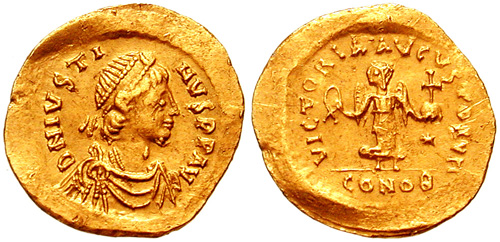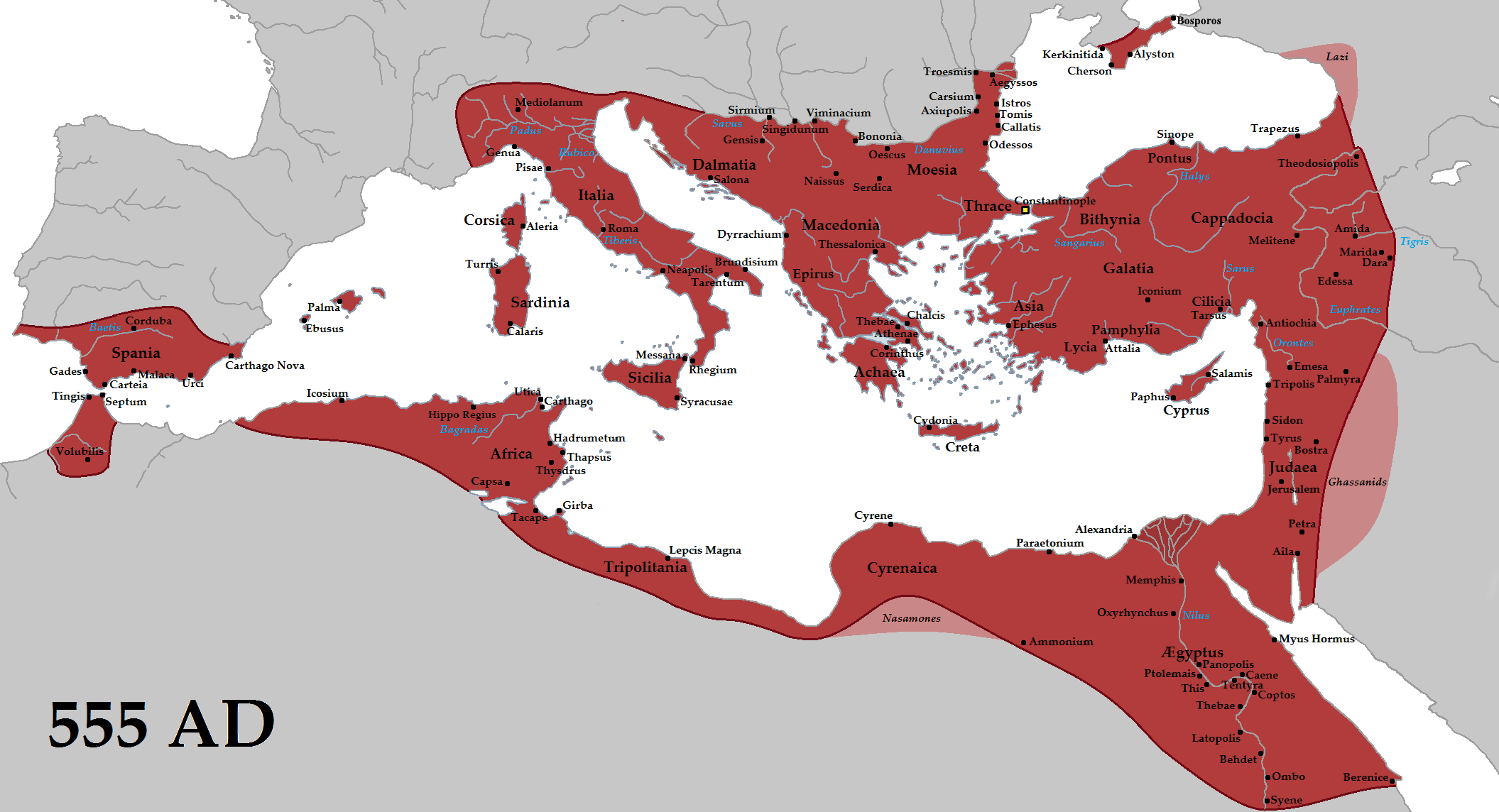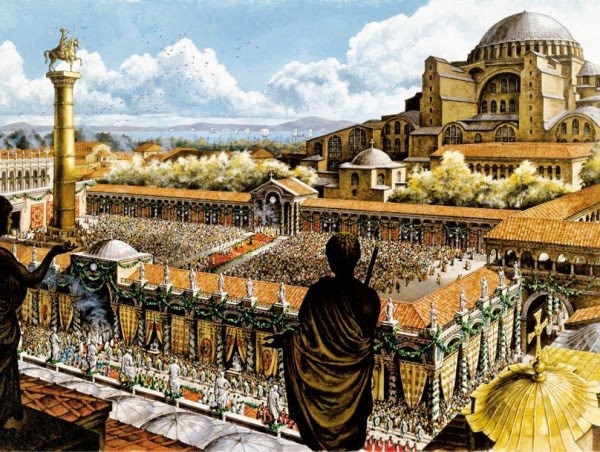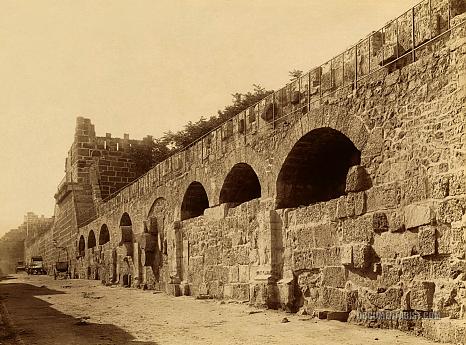The Roman East Empire was an multiethnic empire. Emperors who ruled had different nationalities.
Constantine the Great
Flavius Valerius Constantinus, as he was originally named, was born in the city of Naissus, (today
Niš, Serbia) part of the
Dardania province of
Moesia, on 27 February of an uncertain year,
[28] probably near 272.
[29] His father was
Flavius Constantius,
a native of Dardania province of Moesia (later
Dacia Ripensis).
He Was Illyrian.
The first Roman emperor to
claim conversion to
Christianity,
[notes 4] Constantine played an influential role in the proclamation of the
Edict of Milan, which decreed tolerance for Christianity in the empire. He called the
First Council of Nicaea in 325, at which the
Nicene Creed was professed by Christians.
Foundation of Constantinople
Eventually, however, Constantine decided to work on the city of
Byzantium, which offered the advantage of having already been extensively rebuilt on Roman patterns of urbanism, during the preceding century, by
Septimius Severus and
Caracalla, who had already acknowledged its strategic importance.
[206] The city was thus founded in 324,
[207] dedicated on 11 May 330
[207] and renamed
Constantinopolis ("Constantine's City" or
Constantinople in English).
Colossal marble head of Emperor Constantine the Great, Roman, 4th century
Following his death, his body was transferred to Constantinople and buried in the
Church of the Holy Apostles there.
[260] He was succeeded by his three sons born of Fausta,
Constantine II,
Constantius II and
Constans. A number of relatives were killed by followers of Constantius, notably Constantine's nephews
Dalmatius (who held the rank of Caesar) and
Hannibalianus, presumably to eliminate possible contenders to an already complicated succession. He also had two daughters,
Constantina and
Helena, wife of
Emperor Julian.
[261]
Justin I
Justin was a peasant and a swineherd by occupation
[2] from the region of
Dardania, which is part of the
Diocese of Illyricum.
[3]
He was born in a
hamlet Bederiana near
Naissus (modern
Niš, South
Serbia). The
Justinian Dynasty descend from him
.
He Was Illyrian.
Tremissis of Emperor Justin I
Justinian I or Justinian the Great
Justinian was born in
Tauresium[12] around 482. The
cognomen Iustinianus which he took later is indicative of adoption by his uncle
Justin.
[17] During his reign, he founded
Justiniana Prima not far from his birthplace, today in South East Serbia.
[18][19][20] His mother was Vigilantia, the sister of Justin. Justin, who was in the imperial guard (the
Excubitors) before he became emperor,
[21] adopted Justinian, brought him to
Constantinople, and ensured the boy's education.
[21]
Justinian (b. 483) and consequently Vigilantia Dulcissimus were children of a sister Vigilantia Sabbatius (b. a. 455) of
Justin I (b. a. 450, r. 518–527), founder of the
Justinian Dynasty. T
he family originated in Bederiana, near Naissus (modern Niš in Serbia) in Dacia Mediterranea.[4] Procopius, Theodorus Lector, Zacharias Rhetor, Victor of Tunnuna, Theophanes the Confessor and Georgios Kedrenos consider Justin and his family Illyrians.
As a ruler, Justinian showed great energy. He was known as "the emperor who never sleeps" on account of his work habits.
He Was Illyrian.
He increased the Byzantine Empire due to its maximum.
Emperor Justinian reconquered many former territories of the Western Roman Empire, including
Italy,
Dalmatia, Africa, and southern
Hispania.
He made this with the help of Illyrians generals, the most distinguished was .
Flavius Belisarius was probably born in
Germane or
Germania, a fortified town (some archaeological remains exist) on the site of present day
Sapareva Banya in south-west
Bulgaria, in the borders of
Thrace and
Illyria.
Belisarius may be this bearded figure
[1] on the right of Emperor
Justinian I in the mosaic in the
Church of San Vitale,
Ravenna, which celebrates the reconquest of Italy by the
Byzantine army. Compare Lillington-Martin (2009) page 16.
He Was Illyrian.
Justinian I built in the territory of Illyria 167 castle, which together with the mountainous terrain helped Illyrians during the invasions of the barbarians and the fist wave of slavic invasion.The
Justinian Dynasty made the Empire strong and beautifull, during the Justinian I started the construction of Hagia Sophia
whose works were completed during the reign of Emperor
Justin II (565–578).His reign also marked a blossoming of Byzantine culture, and his building program yielded such masterpieces as the church of
Hagia Sophia, which was to be the center of
Eastern Orthodox Christianity for many centuries.
During this period the empire retained its Latin character. Later emperors with different nationalities ruled the Byzantine Empire.
The last Emperor was
Constantine XI Dragaš Palaiologos.
He was half serbian, 1/4 italian and the rest i don`t know.


















